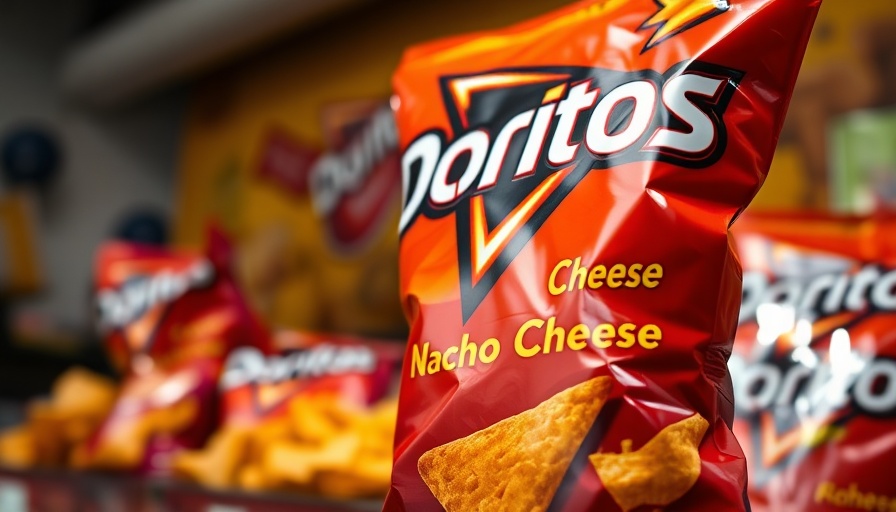
Understanding Artificial Food Dyes: What You Should Know
As consumers, we often pick products based on how they look, which is why the colors of our foods matter so much. Artificial food dyes have become ubiquitous in our snacks and desserts, giving them the vibrant appearances that appeal to people, especially children. But how safe are these colorful additives? Let’s dive deeper into the world of food dyes and their implications for our health and wellness.
The Origins of Food Dyes
Artificial food dyes date back to the mid-19th century, with the first synthetics made from coal tar. Today, most artificial dyes are derived from petroleum, presenting a stark contrast to natural colorings obtained from plants and other organic sources. While synthetic dyes allow for a bright and consistent color palette, concerns about health risks meanwhile have fueled debate among scientists, parents, and consumers alike.
Common Types of Artificial Food Dyes
Among the hundreds of artificial dyes, a few stand out, including Red 40, Yellow 5, and Yellow 6. These dyes are frequently used in candies, soft drinks, and even baked goods. The overwhelming prevalence of these three dyes indicates not just consumer preference for bright colors but also the food industry’s reliance on their effectiveness in enhancing product appeal.
Health Concerns: Are Food Dyes Dangerous?
The controversy surrounding artificial dyes primarily revolves around their potential health risks. Some studies have suggested links between artificial food dyes and behavioral issues in children, particularly hyperactivity. While the evidence isn’t fully conclusive—some children appear more sensitive to these additives than others—many parents are concerned enough to eliminate these substances from their children’s diets.
Furthermore, concerns extend beyond behavioral implications to potential links with allergies and even cancer. Yellow 5, for instance, has been the culprit in many allergic reactions, with symptoms ranging from rashes to asthma. Though regulatory bodies like the FDA maintain that these dyes are safe at approved levels, the presence of additives derived from petroleum raises eyebrows about long-term consumption.
The European Approach: Stricter Regulations
Interestingly, the approach to regulation differs drastically between the US and Europe. While some dyes are permitted in the United States, they may be banned in European countries, reflecting varying levels of caution. The UK's approach has led to the requirement of warning labels on products containing artificial dyes, compelling consumers to make informed choices.
Natural Alternatives: Healthier Choices
In light of this debate, many consumers are now leaning toward natural food colorings derived from fruits, vegetables, and spices. Ingredients like beet juice, carrot extract, and turmeric can add striking colors without the health concerns associated with synthetic dyes. By choosing products that highlight these natural alternatives, individuals can embrace a more holistic approach to health and wellness.
Practical Tips to Reduce Dye Consumption
1. **Check Labels**: Always read the ingredient lists on food packaging to identify artificial dyes. Opt for products free from synthetic additives.
2. **Embrace Whole Foods**: Incorporating more whole foods in your diet—fruits, vegetables, grains, and unprocessed proteins—naturally reduces your intake of artificial colors while promoting better health and wellness.
3. **Cooking at Home**: Preparing meals at home allows for greater control over ingredients. Use natural color sources like spinach powder or pumpkin puree to add color and nutrients to your dishes.
Conclusion
While the artificial colors in our food may make them appealing, awareness of the potential risks they carry is vital for informed dietary choices. By opting for whole foods and natural coloring alternatives, consumers can foster wellness, reduce potential risks, and ultimately make their diets feel vibrant and alive. Let’s continuously educate ourselves about our food choices and pursue healthier lifestyles together.
You Can Take Action!
If you’re motivated to make healthier choices in your diet, consider exploring health and wellness events in your community. Engaging with local wellness businesses and educational workshops can equip you with knowledge and tips on how to avoid harmful additives. Together, let’s commit to better nutrition and the well-being of ourselves and our families.
 Add Row
Add Row  Add
Add 




 Add Row
Add Row  Add
Add 


Write A Comment